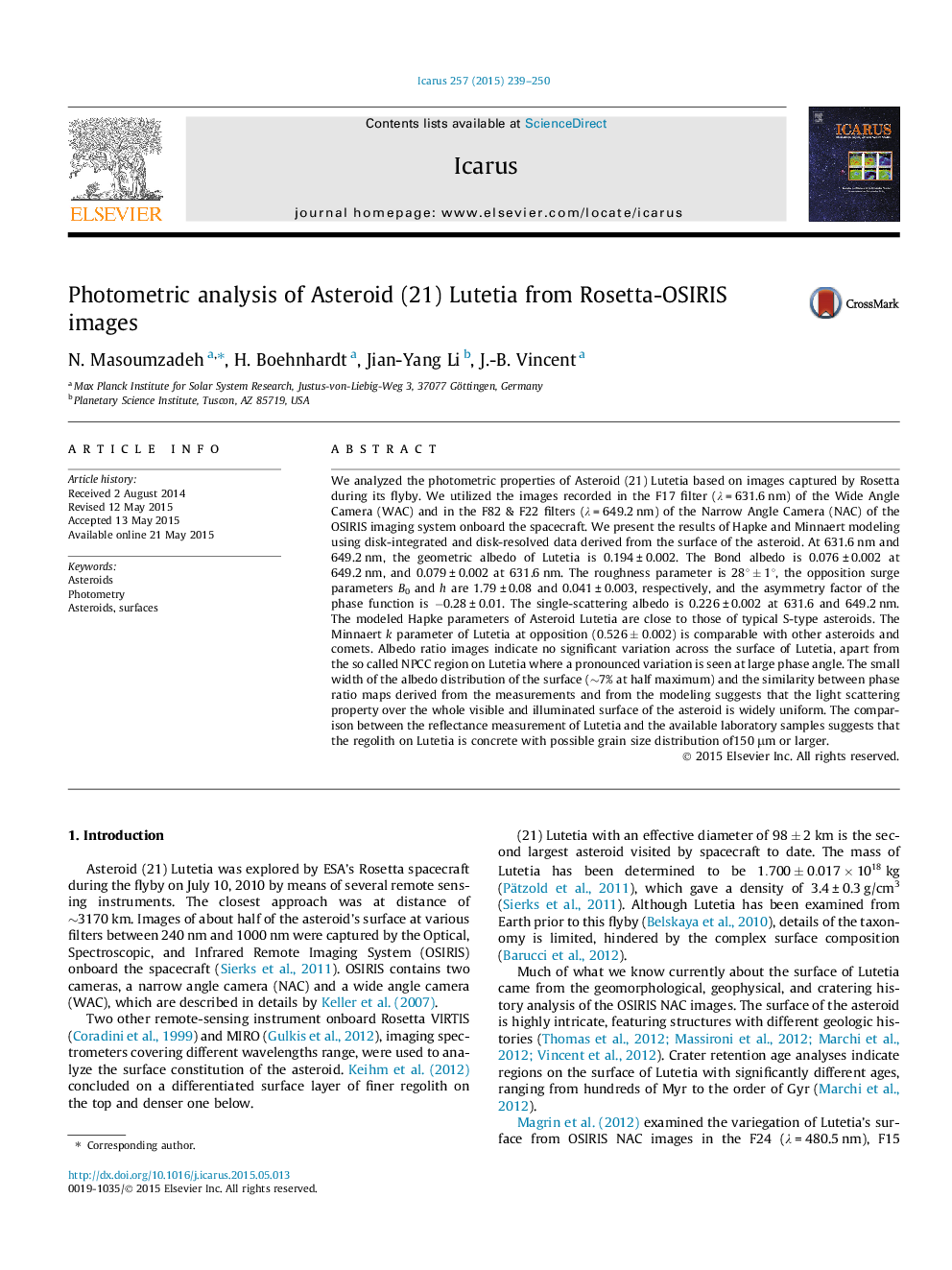| Article ID | Journal | Published Year | Pages | File Type |
|---|---|---|---|---|
| 8136112 | Icarus | 2015 | 12 Pages |
Abstract
We analyzed the photometric properties of Asteroid (21) Lutetia based on images captured by Rosetta during its flyby. We utilized the images recorded in the F17 filter (λ = 631.6 nm) of the Wide Angle Camera (WAC) and in the F82 & F22 filters (λ = 649.2 nm) of the Narrow Angle Camera (NAC) of the OSIRIS imaging system onboard the spacecraft. We present the results of Hapke and Minnaert modeling using disk-integrated and disk-resolved data derived from the surface of the asteroid. At 631.6 nm and 649.2 nm, the geometric albedo of Lutetia is 0.194 ± 0.002. The Bond albedo is 0.076 ± 0.002 at 649.2 nm, and 0.079 ± 0.002 at 631.6 nm. The roughness parameter is 28°±1°, the opposition surge parameters B0 and h are 1.79 ± 0.08 and 0.041 ± 0.003, respectively, and the asymmetry factor of the phase function is â0.28 ± 0.01. The single-scattering albedo is 0.226 ± 0.002 at 631.6 and 649.2 nm. The modeled Hapke parameters of Asteroid Lutetia are close to those of typical S-type asteroids. The Minnaert k parameter of Lutetia at opposition (0.526±0.002) is comparable with other asteroids and comets. Albedo ratio images indicate no significant variation across the surface of Lutetia, apart from the so called NPCC region on Lutetia where a pronounced variation is seen at large phase angle. The small width of the albedo distribution of the surface (â¼7% at half maximum) and the similarity between phase ratio maps derived from the measurements and from the modeling suggests that the light scattering property over the whole visible and illuminated surface of the asteroid is widely uniform. The comparison between the reflectance measurement of Lutetia and the available laboratory samples suggests that the regolith on Lutetia is concrete with possible grain size distribution of150 μm or larger.
Related Topics
Physical Sciences and Engineering
Earth and Planetary Sciences
Space and Planetary Science
Authors
N. Masoumzadeh, H. Boehnhardt, Jian-Yang Li, J.-B. Vincent,
